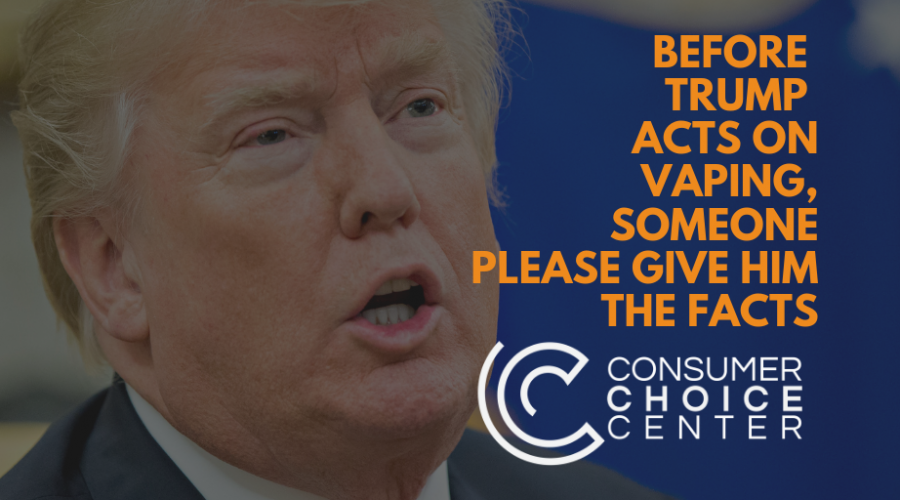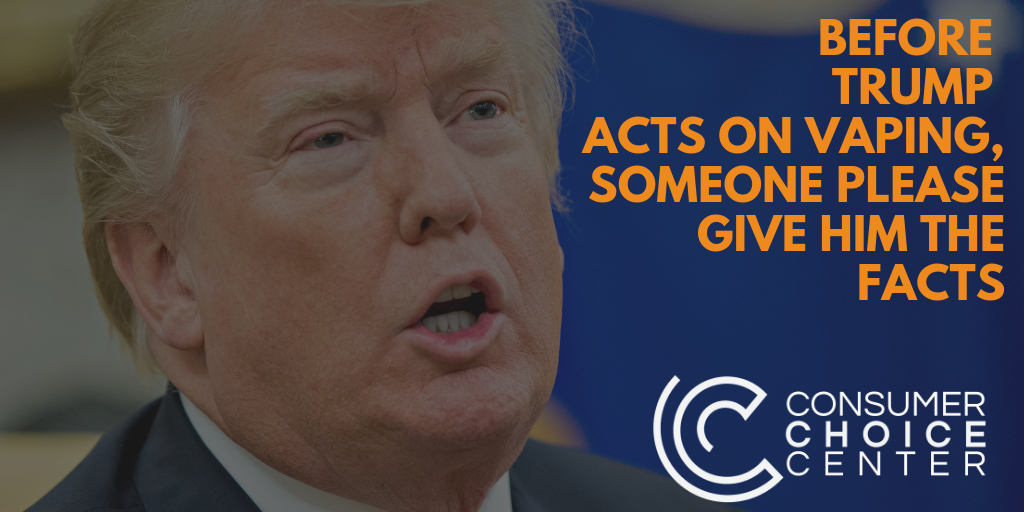Politicians are scapegoating e-cigs for harm they haven’t done
When there’s an outbreak of deaths or illnesses from injected street drugs, do public health authorities demand diabetics and doctors stop using syringes? Of course not. Yet a host of public officials — from President Trump to Gov. Andrew Cuomo to members of the Squad — are taking just that sort of approach in responding to the spate of vaping-related illnesses and deaths around the country.
Cuomo, for example, went on a tear Sunday about vaping, calling it “a burgeoning health crisis” and threatening to declare an emergency to ban flavored nicotine e-cigarettes. That followed Trump’s announcement last Wednesday of federal plans to prohibit such devices.
The dramatic sudden outbursts of concern come after six deaths and 380 severe acute pulmonary illnesses, including at least 41 in New York. The cases were linked not to nicotine e-cigarettes but to vaping THC, the active ingredient in cannabis.
E-cigarettes like Juul are intended to be used to inhale nicotine, but other types of vaping devices can also deliver cannabis-derived substances such as butane hash oils, known as “dabs.”
Scientists at New York’s Department of Health have led the way in pointing the finger at black-market THC-containing liquids, finding “very high levels of vitamin E acetate in nearly all cannabis-containing samples analyzed” in their investigation.
State laboratory test results found that “at least one vitamin E acetate-containing vape product has been linked to each patient who submitted a product for testing.” Vitamin E acetate is an oily substance used to thicken cannabis-derived vaping liquids.
Vaping devices, including e-cigarette hardware, are simply devices for delivering an aerosolized solution. Nicotine e-cigarettes, which serve as a substitute for deadly cigarettes that burn tobacco, typically contain a solution of nicotine, flavorings and vegetable glycerin or propylene glycol.
Globally, tens of millions of people have used billions of e-cigarettes without any acute ill effects. In fact, the US Food and Drug Administration has told state health officials that lab testing of unused legal nicotine vape products of the type obtained from sick patients (who likely also used an illegal THC oil) found no contaminants or ingredients suspected of causing illness.
It’s a very different story when a vaporizer is used to deliver black-market street drugs like the cannabis-derived oils that are being dangerously adulterated with vitamin E acetate.
In announcing the planned federal ban on flavored e-cigarettes in the midst of the outbreak of lung disease, Trump is being misled. Vaping nicotine is an approach to harm-reduction, and appealing non-tobacco flavors are critical to reduce the likelihood that adults will revert to smoking cigarettes.
Exposure to nicotine is not healthy, to be sure, and kids should not vape (unless they already smoke cigarettes and want to transition to a less harmful alternative). But prohibition seldom works, and data from the FDA indicate that while vaping in teens is up, cigarette smoking has fallen to historic lows.
Still, elected officials continue their attack on e-cigarettes, recommending that nearly everyone stop vaping immediately.
That might seem like an abundance of caution, but it’s really an abundance of chicanery. Linking acute lung disease to e-cigarettes is no more logical than warning people about the dangers of vaccination because vaccines are delivered through a needle, and people can get hepatitis from dirty needles.
Expansive warnings to stop vaping altogether, instead of to avoid illicit contaminated THC products, are like advising ex-smokers who have switched to vaping to return to smoking cigarettes. That puts vapers’ lives at risk.
What we need is aggressive state, local and federal enforcement against teen vaping and Drug Enforcement Administration action against illegal THC vapes that cause lung disease.
Meanwhile, why are politicians and public health officials behaving so badly? We have a hypothesis: Until now, the most prominent allegations of serious health effects (even for adults) from e-cigarettes were hypotheticals — such as that vaping would be a “gateway” to cigarette smoking — that have failed to materialize.
In fact, teen cigarette-smoking has been declining. Now, with reports of verifiable acute illnesses and even deaths, politicians are brazenly attempting to indict nicotine vaping, even though their case against the practice is without merit.
In a reckless attempt to redeem their credibility in their war on e-cigarettes, they’ve doubled down on misinformation, disingenuously implying that cannabis-derived oils, home-brewed THC vapes and unadulterated nicotine-containing e-cigarettes all pose the same risks.
They think they can get away with it because … well, virtually nobody has challenged them. It’s time more people did.
Henry Miller is a Pacific Research Institute senior fellow and the founding director of the Food and Drug Administration’s Office of Biotechnology. Jeff Stier is a Consumer Choice Center senior fellow.












